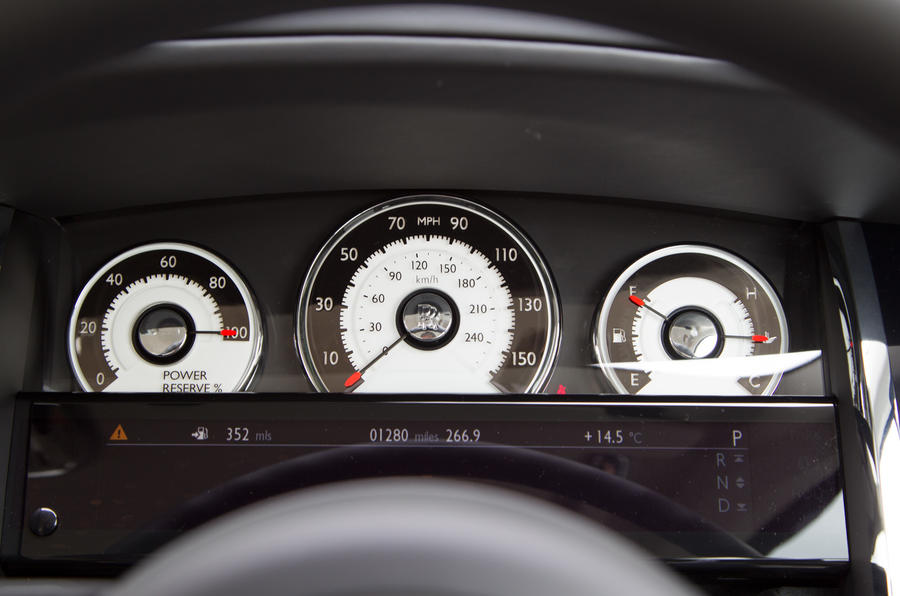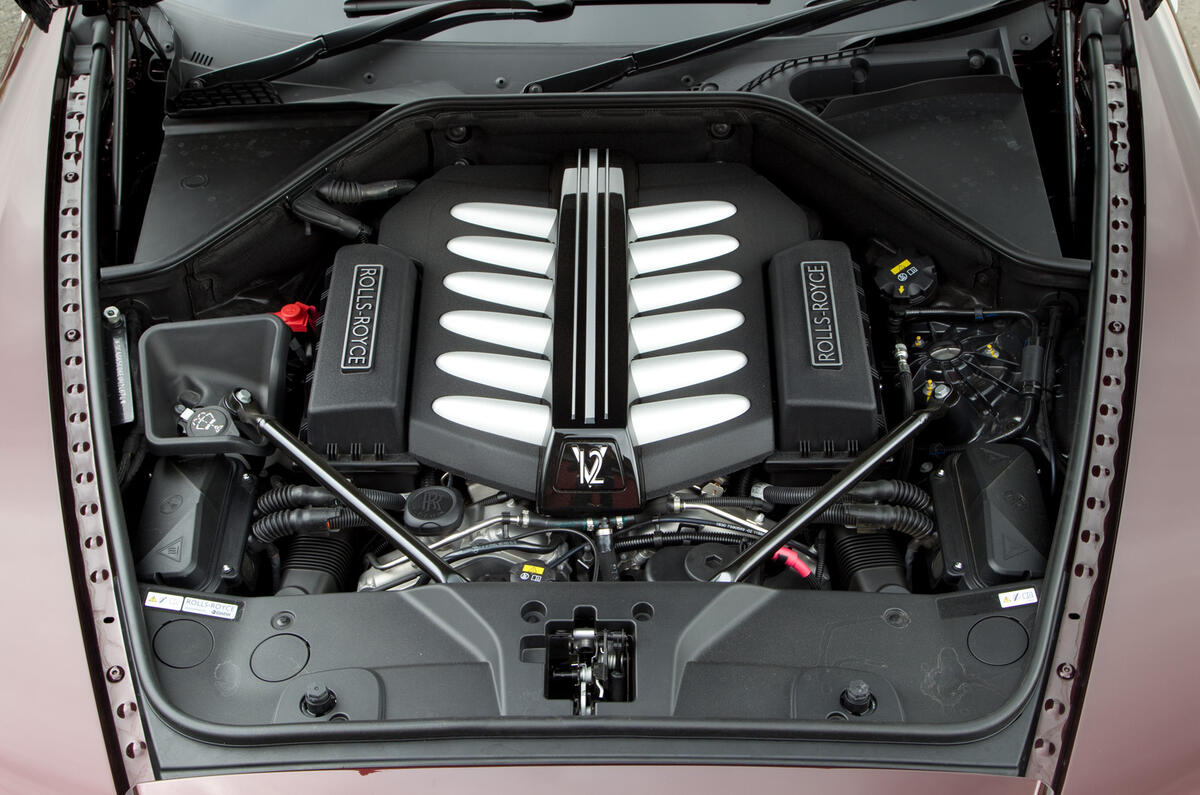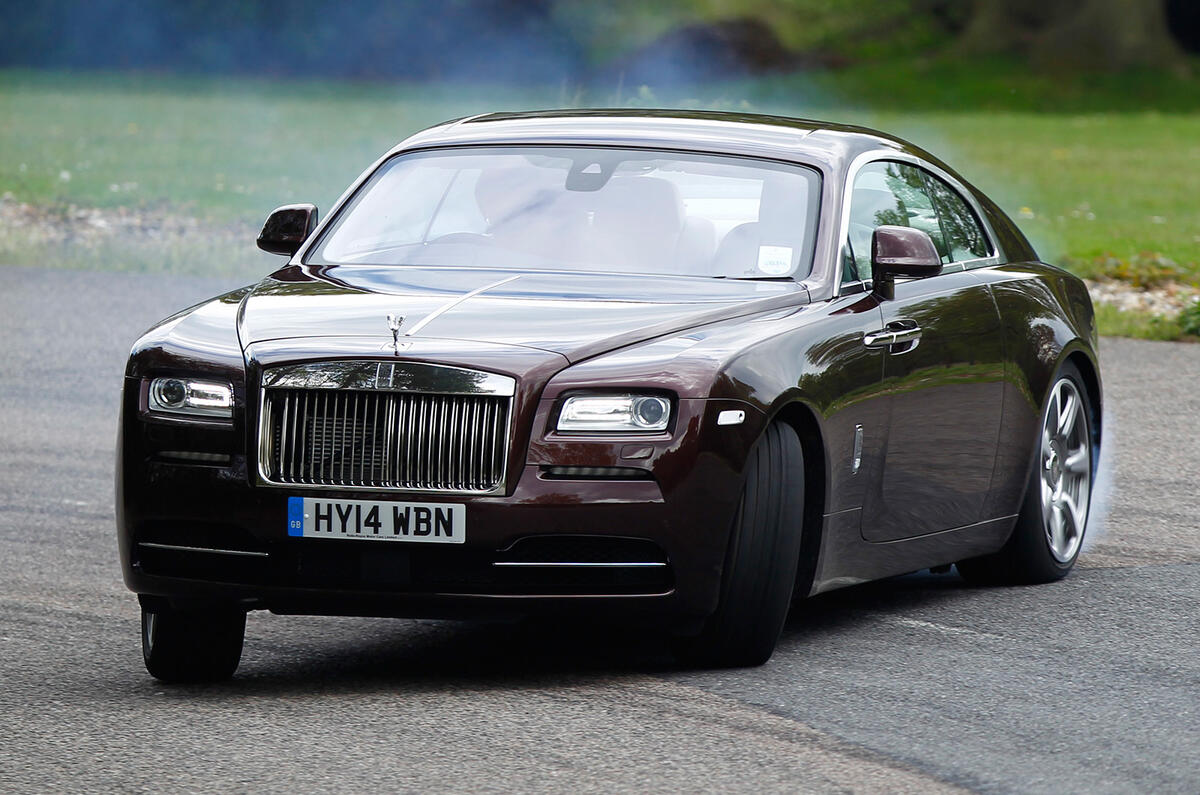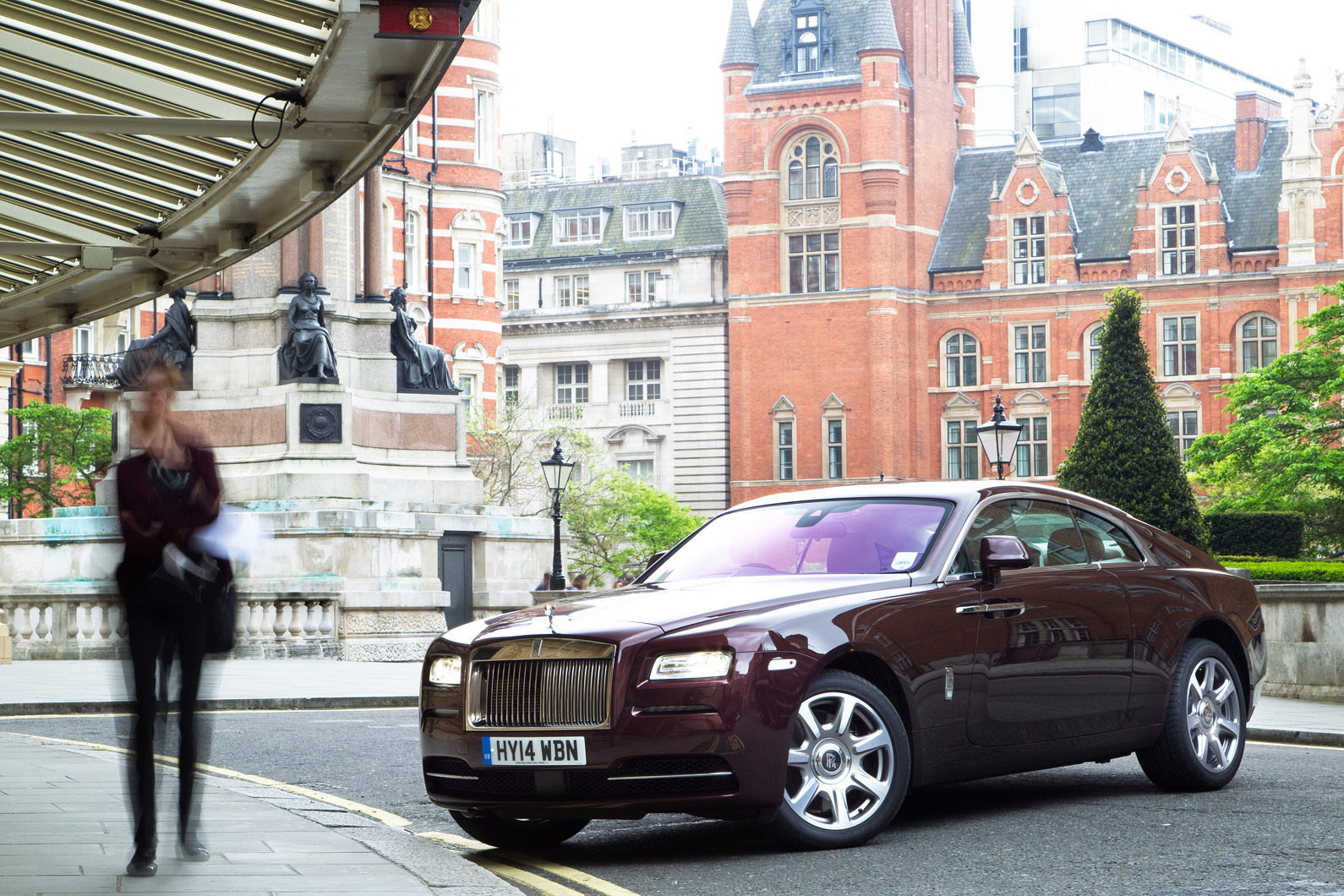A polished steel door handle permits access to the cabin through an extra-long, rear-hinged ‘coach’ door that feels surprisingly light as you swing it open, and lighter still as you shut it since closing it can be done by a motor at the press of a button.
You sit slightly lower in here than in a Rolls-Royce Ghost or a Rolls-Royce Phantom, as befits a sports coupé, but your backside remains an awfully long way from the ground. Perched upright, you survey a cabin of breathtaking sumptuousness, peerless material richness and excellent quality.
The leathers, claims Rolls-Royce, are the softest in the business – and they feel just that. The equally tactile, bookmatched ‘Canadel’ wood panelling running throughout the fascia and doors would grace a multi-million-pound superyacht. In continuation of the theme, the Wraith’s classic instruments, with arrow-straight orange-tipped needles, look almost naval.
But most impressive of all is how cleverly the Wraith’s 21st century in-car technology is integrated into a cabin so endearingly 20th century in its styling idiom – and very early 20th century at that.
The 10.3in high-definition multimedia display is revealed from behind a sliding wood panel, and the fingertip-sensitive iDrive-style rotary controller that masters it is made from crystal cut glass and decorated with a tribute to the Spirit of Ecstasy figurine on the prow of the car.
Far from being shy about up-to-date in-car technology, Rolls-Royce has happily fitted voice-activated satellite navigation, an optional head-up display and a Rolls-Royce Connect iPhone app to the Wraith, all because they contribute to how discreetly the in-car technology operates overall. Rolls-Royce buyers, the company says, like discreet, unobtrusive technology — as do we.
The voice control system works as well as on any other car within the BMW group, which means perfectly well — and it can be used to control the navigation, telephone and audio systems. Seldom do you need to repeat a command. And according to Rolls-Royce, requests like ‘Navigate to Piccadilly’ or ‘Play BBC Radio 4’ work particularly well.
The Bluetooth is easy to pair. The satellite navigation is also easy to program and uses RTTI (Real Time Traffic Information) to route around jams quite effectively. In addition, you can send a destination for that system to the car from your iPhone in advance, using the Rolls-Royce Connect app, to save yourself time on departure.
Some of the classic Rolls-Royce quirks take a bit of getting used to though. There is no manual override for the eight-speed automatic transmission at all, and no tachometer for the engine. In a driver’s car, a revcounter and gearchange paddles would seem to us to be important inclusions.
Cabin space in the car is generous up front and generous enough in the rear for all but the largest of adults.
As for the rest of the standard equipment, there are two trims - Wraith and Black Edition. The entry-level model comes with 20in alloy wheels, adaptive LED headlights, walnut burr for the dashboard, DVD player, Bluetooth, USB connectivity and a hat stand.
Upgrade to the more exclusive Black Edition, and you get a sumptumous black paint job and a raft of more equipment, which includes 21in alloy wheels, a 360-degree camera system, starlight headliner, lane departure assistance, adaptive cruise control and infrared night vision. Inside there is ventilated front seats, a head-up display, a Rolls-Royce Bespoke audio system and lambswool floor mats.































